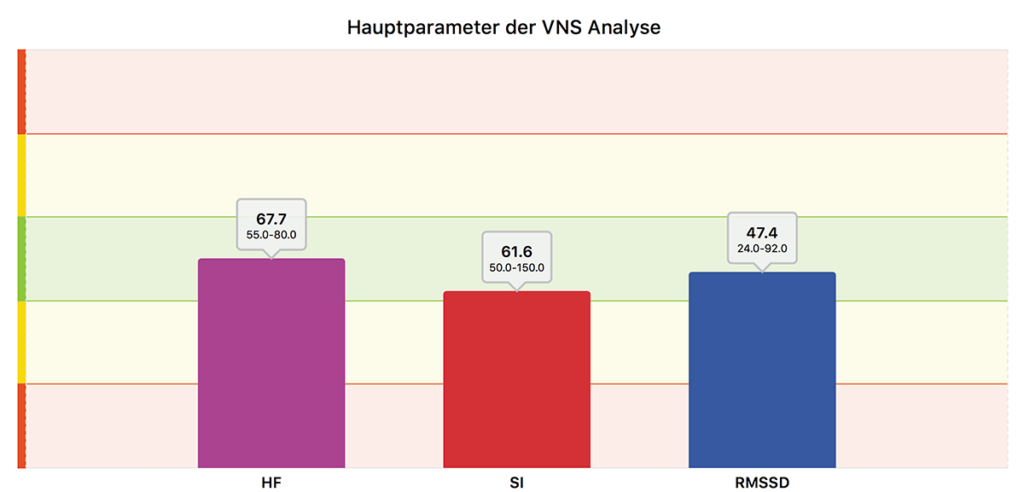In the rhythmogram, each individual time interval from heartbeat to heartbeat is recorded in milliseconds (RR interval) and connected with a line. A total of 520 RR intervals are recorded on the X-axis.
On the Y-axis the duration of the respective heartbeat is displayed.
The more different the individual RR intervals are during the measurement, the more variability can be seen in the ryhthmogram.
This variability is a sign of adaptability. It shows that the autonomic nervous system is able to adjust to internal and external stimuli. Here, the variable heartbeat is used to test whether the autonomic nervous system manages to change the heartbeat depending on the situation.
At rest, this is once the breathing (when inhaling, the heart beats faster, when exhaling, the heart beats slower). This respiratory-dependent variability is referred to as respiratory sinus arrhythmia. This is generated to a large extent by the autonomic nervous system, especially the parasympathetic nervous system.
In addition to breathing, there are other influencing factors in the resting state to which the autonomic nervous system adjusts the body, e.g. the digestive system works, we think about things, we raise our arm to scratch ourselves, we hear sounds. The autonomic nervous system has to adjust the body to all these situations.
The measurement is performed in the idle state. In this resting state, the rhythmogram should show a large variability, since variability is greatest at rest.
Why the variability is greatest at rest is well explained by a simple example:
Our heart does not give full throttle at rest in order to be efficient, but it will only beat as fast as it is necessary at the moment (e.g. a little faster when breathing in, or when you briefly raise your arm to scratch yourself). Afterwards, the heart will immediately start beating slower again to conserve energies.




























